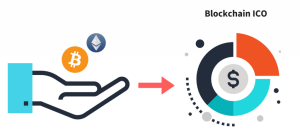 USDC (USD Coin) is a stablecoin cryptocurrency that is pegged to the US dollar. Stablecoins are digital assets designed to maintain a stable value relative to a specific asset, typically a fiat currency like the US dollar. Stablecoins like USDC have gained popularity in recent years as a way to provide stability and reduce volatility in the cryptocurrency market.
USDC (USD Coin) is a stablecoin cryptocurrency that is pegged to the US dollar. Stablecoins are digital assets designed to maintain a stable value relative to a specific asset, typically a fiat currency like the US dollar. Stablecoins like USDC have gained popularity in recent years as a way to provide stability and reduce volatility in the cryptocurrency market.
USDC was launched in 2018 by Centre, a consortium of companies including Circle and Coinbase. The stablecoin is built on the Ethereum blockchain, which enables fast and inexpensive transactions. The US dollar reserves backing USDC are held in regulated financial institutions and are audited regularly to ensure full transparency and accountability. USDC is also subject to various regulatory frameworks, including US anti-money laundering (AML) and know-your-customer (KYC) laws. This ensures that USDC is a trusted and compliant asset that can be used for a variety of financial transactions.
USDC is an ERC-20 token, which means it is built on the Ethereum blockchain and operates within the Ethereum ecosystem. This allows USDC to benefit from the security and stability of the Ethereum network while also being able to integrate with other Ethereum-based applications.
USDC has also gained traction in the decentralized finance (DeFi) space, which refers to a set of financial applications built on top of blockchain technology. In DeFi, USDC can be used for lending and borrowing, yield farming, and other financial activities that rely on stable assets.
Advantages
One of the key advantages of USDC is that it offers a stable value that is not subject to the price volatility of other cryptocurrencies like Bitcoin or Ethereum. This makes it an attractive option for traders and investors who want to hedge against market fluctuations or hold a stable asset as a store of value.
One of the benefits of USDC in DeFi is that it can be easily exchanged for other tokens or stablecoins, allowing users to move their funds between different DeFi protocols quickly and efficiently. USDC has also been integrated into various DeFi platforms, including lending protocols like Aave and Compound, as well as decentralized exchanges like Uniswap and SushiSwap.
USDC can also be used for a wide range of applications, including trading on cryptocurrency exchanges, buying goods and services, and remittances. It has gained popularity as a way to transfer funds across borders quickly and inexpensively, without the need for traditional financial institutions.
Another advantage of USDC is its interoperability with other Ethereum-based tokens and applications. This enables developers to build decentralized applications and smart contracts that use USDC as a stable asset. USDC can also be easily integrated into other financial products and services, such as lending and borrowing platforms.
In addition to its technical features, USDC is also attractive to users because of its regulatory compliance and transparency. The stablecoin is subject to the same regulations as traditional financial institutions and is audited regularly to ensure full transparency and accountability.
Disadvantages
While USDC is built on a decentralized blockchain, its management is centralized through the consortium of companies that created it. This means that the governance and development of USDC are not fully decentralized, which could be a concern for those who value decentralization and censorship resistance.
Regulatory risks: While USDC is subject to various regulatory frameworks, there is still some regulatory risk associated with the stablecoin. Governments and regulators around the world are still grappling with how to regulate cryptocurrencies and stablecoins, and there is a possibility that USDC could be subject to additional regulatory scrutiny or restrictions in the future.
Another disadvantage is counterparty risk. While USDC is backed by US dollar reserves held in regulated financial institutions, there is still some counterparty risk associated with the stablecoin. If the financial institutions holding the reserves were to fail or become insolvent, it could potentially impact the value of USDC.
Lack of transparency is another drawback. While USDC is audited regularly to ensure transparency and accountability, there is still some concern around the lack of transparency in the stablecoin market more broadly. Some stablecoins have been accused of lacking transparency around their reserve holdings or auditing practices, which could potentially impact their value and reputation.USDC has become one of the most widely used stablecoins, with a market capitalization of over $10 billion as of March 2023. It has been adopted by a wide range of companies and platforms, including cryptocurrency exchanges, wallets, and payment processors.
It’s important to weigh these potential disadvantages against the many advantages of USDC, and to consider your own priorities and risk tolerance when deciding whether to use USDC or any other cryptocurrency or stablecoin.
In conclusion, USDC is a stablecoin that provides stability and reduces volatility in the cryptocurrency market. It is built on the Ethereum blockchain, offers fast and inexpensive transactions, and is backed by US dollar reserves held in regulated financial institutions. USDC has gained popularity as a way to transfer funds across borders quickly and inexpensively, and can be used for a wide range of applications, including trading on cryptocurrency exchanges, buying goods and services, and remittances. Its interoperability with other Ethereum-based tokens and applications makes it an attractive option for developers, while its regulatory compliance and transparency make it a trusted option for users.







